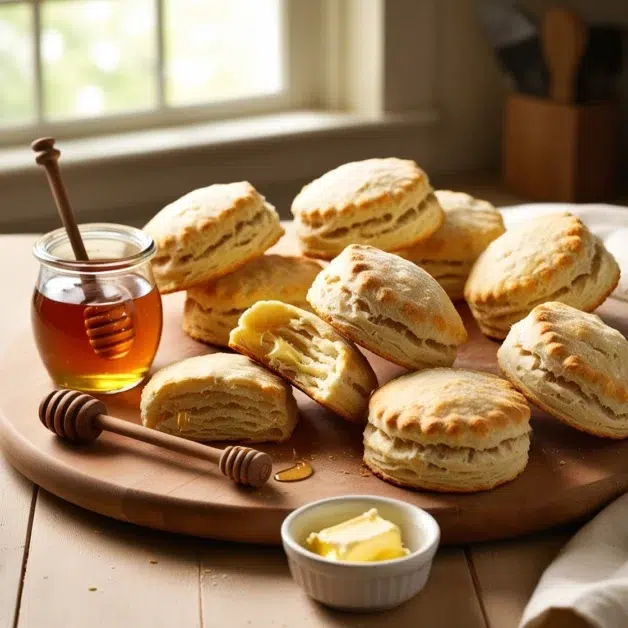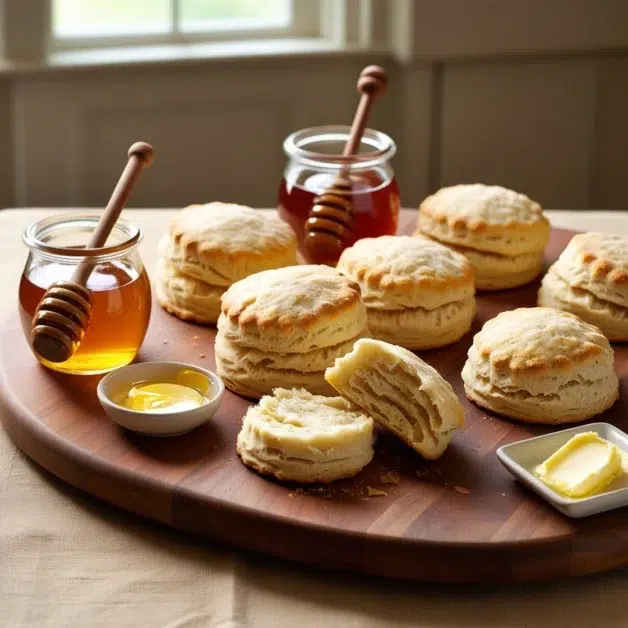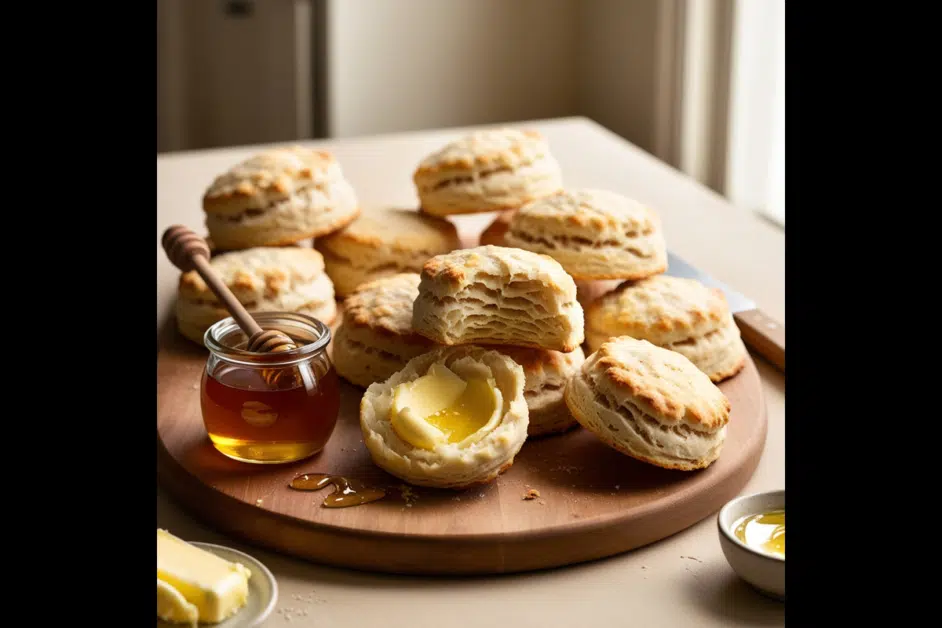Restoring heritage grains has become a popular movement among health-conscious individuals and sustainable farmers alike. Among these ancient grains, einkorn stands out as one of the oldest and most nutritionally rich. In this article, we will dive deep into restoring heritage grains with a focus on einkorn and how to create the perfect einkorn biscuit recipe.
Introduction to Heritage Grains
Heritage grains, such as einkorn, have been cultivated for thousands of years. Unlike modern wheat, these grains have not been altered through extensive hybridization, which means they retain their original nutritional content and flavors. This has led to a growing interest in restoring these grains to our diets.
What is Einkorn?
Einkorn is one of the earliest forms of wheat, with a history dating back over 10,000 years. It is unique because it contains fewer chromosomes than modern wheat, making it easier to digest for many people. Additionally, einkorn is packed with nutrients, including more protein, vitamins, and minerals than conventional wheat.
For those looking to improve their diet, incorporating einkorn into daily recipes is an excellent choice. Moreover, its rich, slightly nutty flavor makes it a favorite among bakers.
Why Restore Heritage Grains?
Restoring heritage grains like einkorn is about more than just nutrition. It also involves:
- Environmental Sustainability: Heritage grains are typically grown using traditional farming methods, which are more sustainable and environmentally friendly. They require less water, fewer chemical inputs, and support biodiversity.
- Supporting Local Farmers: By choosing heritage grains, you support small-scale farmers who are committed to preserving these ancient varieties.
- Health Benefits: Einkorn, in particular, has been shown to be easier to digest and less likely to cause gluten sensitivities compared to modern wheat.
Nutritional Benefits of Einkorn
One of the primary reasons to incorporate einkorn into your diet is its superior nutritional profile. Einkorn is:
- High in Protein: Einkorn contains 30% more protein than modern wheat, making it an excellent choice for those looking to increase their protein intake.
- Rich in Vitamins: It is particularly high in B vitamins, which are essential for energy production and brain health.
- Packed with Minerals: Einkorn is a good source of essential minerals such as iron, zinc, and magnesium.
In contrast to modern wheat, which has been stripped of many nutrients through processing, einkorn retains its whole-grain goodness. This makes it an ideal choice for those who want to enjoy the benefits of whole grains without the drawbacks of modern wheat.
For more on the nutritional profile of einkorn, visit Nutritional Profile of Einkorn Wheat.
The Importance of Baking with Einkorn
As more people discover the benefits of einkorn, it has become a staple in many kitchens. Baking with einkorn flour, however, requires some adjustments, as it behaves differently from modern wheat flour. The key is understanding how to work with its unique properties to create delicious baked goods, like the perfect einkorn biscuit.
Einkorn Biscuit Recipe: Step-by-Step Guide

Creating a delicious batch of einkorn biscuits is simple if you follow these steps. This recipe is designed to maximize the flavor and texture of einkorn while keeping the process straightforward.
Ingredients:
- 2 ½ cups all-purpose einkorn flour
- 1 tablespoon baking powder
- 1 tablespoon sugar
- ½ teaspoon salt
- ½ cup cold unsalted butter (cut into small pieces)
- ¾ cup milk or kefir
Instructions:
- Preheat Your Oven: Start by preheating your oven to 425°F (220°C). This ensures that your biscuits bake evenly.
- Mix Dry Ingredients: In a large bowl, combine the einkorn flour, baking powder, sugar, and salt. Whisk them together to distribute the leavening agents evenly.
- Cut in the Butter: Add the cold butter pieces to the flour mixture. Using a pastry cutter or your fingers, work the butter into the flour until the mixture resembles coarse crumbs. This step is crucial for creating the flaky texture of the biscuits.
- Add the Liquid: Pour in the milk or kefir and stir gently until the dough just comes together. Be careful not to overmix, as einkorn dough can become tough if handled too much.
- Shape the Biscuits: Transfer the dough onto a lightly floured surface and gently pat it into a rectangle about 1-inch thick. Use a biscuit cutter or a glass to cut out round biscuits, then place them on a parchment-lined baking sheet.
- Bake: Bake the biscuits in the preheated oven for 12-15 minutes, or until they are golden brown on top.
- Enjoy: Serve the biscuits warm with butter, honey, or your favorite jam.

This recipe highlights the ease of working with einkorn and the delicious results it produces. For variations, you can experiment with adding herbs, cheese, or even a touch of cinnamon for a different flavor profile.
Flavor Variations and Tips
While the basic einkorn biscuit recipe is delightful on its own, there are many ways to customize it:
- Sweet Biscuits: Add 2 tablespoons of honey or maple syrup to the dough for a slightly sweet biscuit. You can also add a sprinkle of sugar on top before baking.
- Savory Biscuits: Incorporate chopped herbs like rosemary or thyme into the dough. A handful of shredded cheese, such as cheddar, can also be a delicious addition.
- Buttermilk Variation: Substitute the milk or kefir with buttermilk for a tangier flavor and a slightly different texture.
Traditional Baking Methods with Einkorn
Baking with einkorn is not just about the recipe; it’s about connecting with traditional methods that have been passed down through generations. Einkorn flour requires a gentler touch and a shorter mixing time to avoid overworking the dough, which can lead to dense, tough biscuits.
Historically, einkorn was milled using stone mills, which helped retain its nutritional value and flavor. Today, many bakers are returning to these traditional methods, recognizing that they result in superior baked goods.
If you’re interested in learning more about traditional einkorn baking, you might want to explore Ancient Grains in Traditional Baking.
Einkorn in Modern Baking Culture
Einkorn is no longer just a grain of the past; it has found a place in modern baking culture. Artisanal bakers and home cooks alike are embracing einkorn for its unique flavor and nutritional benefits. Whether you’re making bread, pancakes, or, of course, biscuits, einkorn adds a depth of flavor that’s hard to beat.
Moreover, as more people become aware of the benefits of restoring heritage grains, einkorn’s popularity continues to grow. It’s a grain that brings both health and heritage to the table.
For an interesting twist on your baking, consider checking out this Easy Bibibop Copycat Chicken Recipe, which pairs wonderfully with homemade einkorn biscuits.
FAQs about Einkorn and Einkorn Biscuits
As more people experiment with einkorn, several questions often arise:
- What is the best way to store einkorn flour?
- Store Einkorn flour in an airtight container in a cool, dry place. For extended storage, keep it in the refrigerator or freezer to preserve its freshness.
- Can I substitute einkorn flour for regular flour in other recipes?
- Yes, but be aware that einkorn absorbs liquid differently and may require adjustments to the recipe. It’s often best to start with a recipe specifically designed for einkorn.
- Is einkorn safe for those with gluten sensitivities?
- While einkorn contains gluten, it is structurally different from the gluten in modern wheat, making it easier for some people to digest. However, it is not suitable for those with celiac disease.
- How does einkorn differ from spelt or emmer?
- Einkorn, spelt, and emmer are all ancient grains, but einkorn is the oldest and has the simplest gluten structure. Each has its own unique flavor and nutritional profile.
- What are some other recipes that use einkorn?
- Einkorn can be used in a variety of recipes, from bread to pancakes to cookies. It’s a versatile grain that works well in many types of baked goods.
For a delightful pairing with your biscuits, you might enjoy this Best Homemade Eskimo Pie Popsicle Recipe.
Conclusion: Embracing Einkorn in Your Kitchen
Restoring heritage grains like einkorn is about more than just following a trend. It’s about reconnecting with our food heritage, supporting sustainable agriculture, and enjoying the rich flavors and nutritional benefits that these ancient grains have to offer.
By trying out the einkorn biscuit recipe shared here, you’re not only indulging in a delicious treat but also contributing to the preservation of a grain that has fed humanity for thousands of years. So, why not make einkorn a staple in your kitchen? You’ll find that its unique qualities make it a grain worth exploring.
Call to Action
If you haven’t yet tried baking with einkorn, now is the perfect time. Start with the simple biscuit recipe provided here, and then explore other ways to incorporate this ancient grain into your diet. Your body and taste buds will thank you!
And remember, by choosing einkorn and other heritage grains, you’re supporting a healthier, more sustainable food system. Let’s bring these ancient grains back to the forefront of our kitchens, one biscuit at a time.
For another delicious recipe that pairs well with your einkorn biscuits, check out this Ocharleys Potato Soup Recipe, a comforting classic that’s sure to warm you up.
